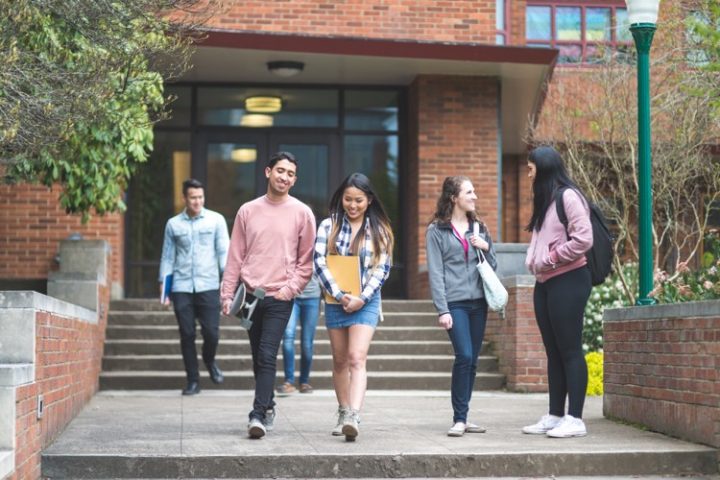
“Diversity” is now both dogma and buzzword, with many Americans accepting as supposition that it should be sought as an end unto itself. But a new report from the think tank the Center for Equal Opportunity (CEO) finds that campus diversity efforts are actually destructive.
In fact, the study indicates that such endeavors serve to intensify stereotypes and increase student alienation and dissatisfaction with their college experience.
The report, “‘Campus Diversity and Student Discontent: The Costs of Race and Ethnic Preferences in College Admissions’ was written by researcher Althea Nagai, who also wrote a 2018 CEO report on Asian Americans and affirmative action in admissions,” informs The College Fix.
“For the sake of campus diversity, many colleges and universities pass over white and Asian American applicants with better academic preparation, favoring blacks and (to a lesser extent) Hispanics,” the report relates, stating the obvious. “CEO statistical research (logistic regression analyses) showed that underrepresented minorities (URMs) received significant preference over white and Asian American applicants with the same or better academic credentials.”
Moreover, “Whites also received preference over Asian Americans at several universities,” the report tells us. For example, at “Harvard, being Asian American was the only statistically negative factor among more than 10 factors considered by the admissions committee,” the CEO continues.
Note here that on Wednesday, the Joe Biden administration dropped a Trump-era federal lawsuit against Yale University that was meant to address the institution’s discrimination against whites and Asian-descent Americans. Interestingly, though, 63 percent of Asian-descent Americans voted for Biden, raising the question: Did they at all know what they were supporting?
Yet diversity efforts don’t help “URMs” (blacks and Hispanics), either. As the CEO study warns, “Racial preference in admissions creates race consciousness and mismatch,” the latter being when students are thrust into academic environments too difficult for them. Furthermore, the report writes:
- Admissions committees keep the degree of mismatch secret.
- Mismatched students disproportionately drop out of STEM [Science, Technology, Engineering, and Mathematics], change to non-STEM majors, transfer to other schools, and take longer to graduate.
- The academic disparities from mismatch continue throughout college.
And the psychological “costs associated with campus diversity and disparities are many,” the report then explains, relating the following:
- Black students experienced greater first-year “grade shock,” greater discounting of academic feedback, greater alienation, less attachment to the university, and greater dissatisfaction with their overall college experience.
- Pre-college academic factors were strong predictors of these psychological setbacks.
- Many URMs would have gone somewhere else had they known where they ranked.
In other words, these students could have made more informed college-path decisions if academia hadn’t lied to them in diversity schemes’ name.
But the deception starts early and runs deep. The late Professor Walter E. Williams, a black academic, had written much about the “academic mismatch” phenomenon. Among other things, he pointed out that black students (and others) are too often socially promoted in primary and secondary education — that is, they’re allowed to ascend to higher grades despite not having mastered course work — and thus have fraudulent high school diplomas.
Teachers and administrators do this driven by a politically correct, affirmative action mentality and also a desire to increase their graduation rate so it appears they’re doing a good job. The result, however, is that these black students often enter college with serious deficiencies in even English and math.
When they then experience inevitable failure, they’re humiliated and shocked because social promotion fooled them into believing they possessed qualifications they didn’t. It’s akin to giving someone poor training and a fraudulent pilot’s license and letting him find out the truth by crashing a plane.
Moreover, Professor Williams had pointed out that the deceived black students are then more likely to attribute their college failures to racism. What else could explain why they, despite having high school diplomas like other students, aren’t getting the same grades?
What’s more, campus diversity also creates discontent among nonminority students and faculty, as it’s “correlated with more student unhappiness; less satisfaction with their quality of education; less work effort; and less satisfaction with the college experience,” the CEO report writes.
In summary, the studies cited in the report “show the many psychological and social costs of campus diversity,” the CEO further informs, writing:
- Students are generally less happy.
- Racial preferences’ beneficiaries end up feeling more victimized and alienated.
- Campus diversity increases social self-segregation.
- Diversity admissions creates [sic] resentment and stigma.
- Stereotypes and feelings of injustice are reinforced, for both whites and blacks.
Despite pointing out the mismatch realities, however, Professor Williams wrote in 2008 that he’d still be asked, “If top-tier colleges don’t have racially different admissions policies, how are they going to have enough black students?”
“My response is that’s their problem,” he continued. “Black people can’t afford to have our youngsters turned into failures so that in the name of diversity race hustlers and white liberals can feel better.”
That’s a good answer, but here’s another: What’s “enough black students” (or anyone else)? Does the NFL have “enough” women? Does the NBA, which is 74.2 percent black, have “enough” white and Asian-descent players (the latter of whom are 0.4 percent of the league)? Does nursing have “enough” men?
Who determines “enough”? Some may say that an arena should reflect the wider population’s group composition, but this is silly and unrealistic. Not only is this standard applied selectively (e.g., the NBA isn’t subject to it), but there’s never been a time or place in history in which groups were equally or proportionately represented across endeavors.
The reality is that while we can debate the causes — nature, nurture, or both — groups have varying characteristic strengths and weaknesses and thus perform differently in many fields. So the conception of “enough” is arbitrary.
So are “diversity’s” criteria. The social engineers tend to focus on race and to a lesser extent ethnicity (e.g., Hispanic) when assessing diversity. But consider: The Supreme Court is approximately 22 percent Jewish and maybe 11 percent Protestant (perhaps Justice Gorsuch) in a nation 2.2 percent Jewish and 43 percent Protestant. Does it have “enough” Protestants?
Of course, that’s not the kind of diversity about which the puppeteers care. That’s the point, too. Diversity measures could encompass religion, ideology, governing philosophy, precise ethnic assessments (including DNA analysis), and physical variation such as height and weight along with a multitude of other factors. So why the inordinate focus on race?
If people are just and merit-oriented, none of this will matter. They won’t care about a field’s racial composition any more than we trouble over the NHL being 100 percent male.
But because this does matter to the Left, they just may do something about “academic mismatches” — they may eventually apply social promotion to higher education so they’ll have “enough” “URM” Ivy League graduates.
And this will continue until we all say, “Enough is enough — even one left-wing social engineer is too many.”



